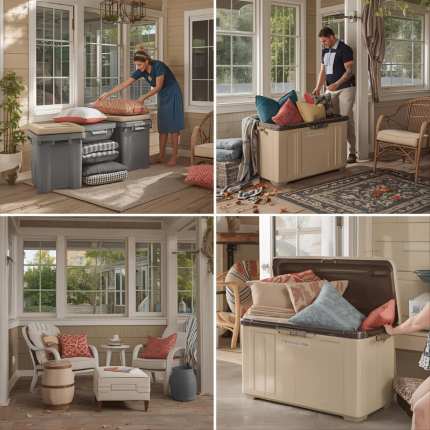
Protecting Your Outdoor Furniture: The Best Way to Store Cushions for Winter in North Carolina
As the cooler months settle in across North Carolina, it’s time to think about protecting your outdoor furniture from the winter elements. While your patio setup has served you well all summer long, taking a few extra steps now can help ensure your cushions and furniture look fresh, clean, and comfortable when spring arrives.
Here’s your complete guide to storing outdoor cushions and furniture during winter, tailored for the North Carolina climate — where cold rain, humidity, and the occasional freeze can take a toll.
1. Start with a Good Cleaning
Before storing your cushions, give them a thorough cleaning.
- Wipe or spot clean the surface with mild soap and water.
- If your cushion covers are removable, wash them separately according to the label.
- Allow everything to dry completely before storing — even slight moisture can lead to mildew or musty smells over the winter.
Tip: Choose a breezy, sunny day to make sure everything dries fully!
2. Choose the Right Storage Location
When it comes to storing cushions, location matters. The best places are dry, cool, and covered — such as:
- A garage or storage shed
- A covered porch or screened-in area
- Indoors, in a closet, attic, or spare room
If inside storage isn’t an option, consider a weatherproof outdoor deck box or cushion storage bin. Look for containers made of waterproof and UV-resistant materials to protect against both rain and humidity.
3. Keep Moisture Out
Even in storage, moisture is your biggest enemy. To prevent mildew:
- Place silica gel packs or DampRid containers inside your storage box.
- Avoid sealing cushions in airtight plastic bags — these trap moisture and can lead to odor or mildew growth.
Instead, choose breathable storage bags or fabric covers that allow air to circulate.
4. Elevate and Cover
Keep stored cushions off the floor — especially if you’re storing them in a garage or shed. Use a pallet, shelf, or plastic bin to prevent contact with cold, damp concrete.
Then, cover them with a lightweight cloth or sheet to block dust while allowing airflow.
5. Don’t Forget the Furniture Frames
While you’re protecting your cushions, don’t neglect the furniture itself!
- Wicker and steel frames should be moved under shelter or covered to avoid moisture damage and rust.
- Aluminum or resin wicker can often stay outdoors with a fitted cover, but be sure to brush off debris and dirt before covering.
- For wood furniture, consider applying a sealant or protective oil to help it resist moisture through the winter months.
6. Come Spring, Freshen and Fluff
When warm weather returns, simply remove your cushions from storage, fluff them up, and set them back out on your patio furniture. A light cleaning or fabric refresher spray can help them smell and feel like new again.



